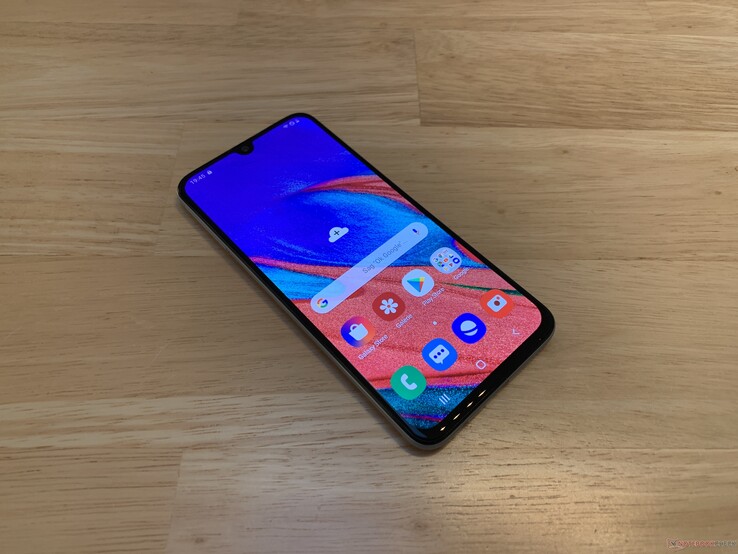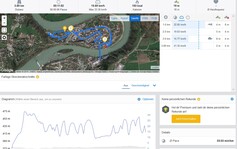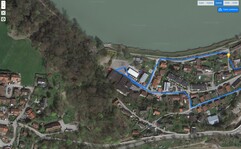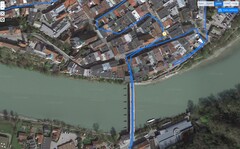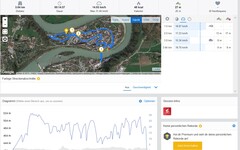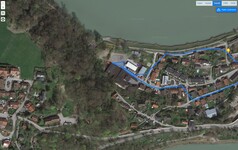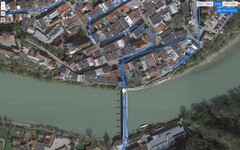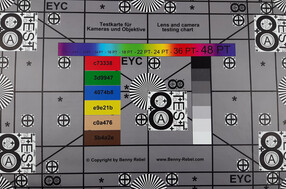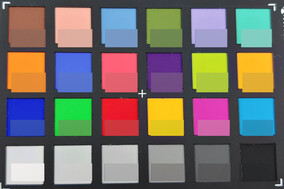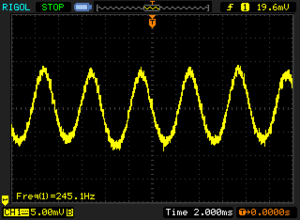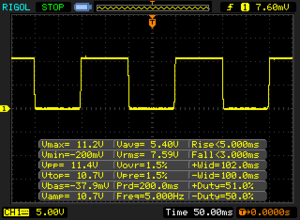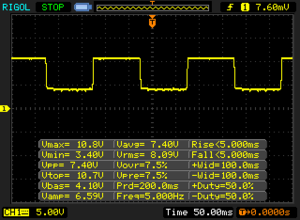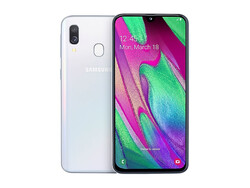Breve Análise do Smartphone Samsung Galaxy A40
Os Top 10
» Os Top 10 Portáteis Multimídia
» Os Top 10 Portáteis de Jogos
» Os Top 10 Portáteis Leves para Jogos
» Os Top 10 Portáteis Acessíveis de Escritório/Empresariais
» Os Top 10 Portáteis Premium de Escritório/Empresariais
» Os Top 10 dos Portáteis Workstation
» Os Top 10 Subportáteis
» Os Top 10 Ultrabooks
» Os Top 10 Conversíveis
» Os Top 10 Tablets
» Os Top 10 Smartphones
» A melhores Telas de Portáteis Analisadas Pela Notebookcheck
» Top 10 dos portáteis abaixo dos 500 Euros da Notebookcheck
» Top 10 dos Portáteis abaixo dos 300 Euros
| Networking | |
| iperf3 transmit AX12 | |
| Samsung Galaxy A40 | |
| Gigaset GS280 | |
| Xiaomi Redmi Note 7 | |
| Samsung Galaxy A6 2018 | |
| Samsung Galaxy M20 | |
| iperf3 receive AX12 | |
| Xiaomi Redmi Note 7 | |
| Samsung Galaxy A40 | |
| Gigaset GS280 | |
| Samsung Galaxy A6 2018 | |
| Samsung Galaxy M20 | |
| |||||||||||||||||||||||||
iluminação: 94 %
iluminação com acumulador: 358 cd/m²
Contraste: ∞:1 (Preto: 0 cd/m²)
ΔE ColorChecker Calman: 7.4 | ∀{0.5-29.43 Ø4.78}
ΔE Greyscale Calman: 4 | ∀{0.09-98 Ø5}
142.6% sRGB (Calman 2D)
Gamma: 2.084
CCT: 7078 K
| Samsung Galaxy A40 Super AMOLED, 2340x1080, 5.9" | Samsung Galaxy A6 2018 Super AMOLED, 1480x720, 5.6" | Samsung Galaxy M20 PLS TFT, 2340x1080, 6.3" | Xiaomi Redmi Note 7 IPS, 2340x1080, 6.3" | Gigaset GS280 IPS, 2160x1080, 5.7" | |
|---|---|---|---|---|---|
| Screen | 34% | 4% | 41% | 6% | |
| Brightness middle (cd/m²) | 358 | 453 27% | 452 26% | 541 51% | 472 32% |
| Brightness (cd/m²) | 370 | 459 24% | 445 20% | 540 46% | 473 28% |
| Brightness Distribution (%) | 94 | 93 -1% | 92 -2% | 91 -3% | 87 -7% |
| Black Level * (cd/m²) | 0.41 | 0.33 | 0.28 | ||
| Colorchecker dE 2000 * | 7.4 | 2.6 65% | 5.3 28% | 2.7 64% | 4.7 36% |
| Colorchecker dE 2000 max. * | 12.5 | 9.2 26% | 9.5 24% | 4.6 63% | 9.6 23% |
| Greyscale dE 2000 * | 4 | 1.6 60% | 6.8 -70% | 3.1 22% | 7 -75% |
| Gamma | 2.084 106% | 2.07 106% | 2.23 99% | 2.26 97% | 2.26 97% |
| CCT | 7078 92% | 6356 102% | 8355 78% | 6853 95% | 7730 84% |
| Contrast (:1) | 1102 | 1639 | 1686 |
* ... menor é melhor
Cintilação da tela / PWM (modulação por largura de pulso)
| Tela tremeluzindo/PWM detectado | 245 Hz | ||
A luz de fundo da tela pisca em 245 Hz (pior caso, por exemplo, utilizando PWM) . A frequência de 245 Hz é relativamente baixa, portanto, usuários sensíveis provavelmente notarão cintilação e sentirão fadiga ocular na configuração de brilho indicada e abaixo. [pwm_comparison] Em comparação: 53 % de todos os dispositivos testados não usam PWM para escurecer a tela. Se PWM foi detectado, uma média de 8108 (mínimo: 5 - máximo: 343500) Hz foi medida. | |||
Exibir tempos de resposta
| ↔ Tempo de resposta preto para branco | ||
|---|---|---|
| 8 ms ... ascensão ↗ e queda ↘ combinadas | ↗ 5 ms ascensão | |
| ↘ 3 ms queda | ||
| A tela mostra taxas de resposta rápidas em nossos testes e deve ser adequada para jogos. Em comparação, todos os dispositivos testados variam de 0.1 (mínimo) a 240 (máximo) ms. » 21 % de todos os dispositivos são melhores. Isso significa que o tempo de resposta medido é melhor que a média de todos os dispositivos testados (20.2 ms). | ||
| ↔ Tempo de resposta 50% cinza a 80% cinza | ||
| 10 ms ... ascensão ↗ e queda ↘ combinadas | ↗ 5 ms ascensão | |
| ↘ 5 ms queda | ||
| A tela mostra boas taxas de resposta em nossos testes, mas pode ser muito lenta para jogadores competitivos. Em comparação, todos os dispositivos testados variam de 0.165 (mínimo) a 636 (máximo) ms. » 22 % de todos os dispositivos são melhores. Isso significa que o tempo de resposta medido é melhor que a média de todos os dispositivos testados (31.6 ms). | ||
| Basemark GPU 1.1 | |
| 1920x1080 Vulkan Medium Offscreen (classificar por valor) | |
| Samsung Galaxy A40 | |
| Média Samsung Exynos 7904 (n=1) | |
| Vulkan Medium Native (classificar por valor) | |
| Samsung Galaxy A40 | |
| Média Samsung Exynos 7904 (n=1) | |
| 1920x1080 OpenGL Medium Offscreen (classificar por valor) | |
| Samsung Galaxy A40 | |
| Média Samsung Exynos 7904 (6.21 - 8.72, n=2) | |
| AnTuTu v7 - Total Score (classificar por valor) | |
| Samsung Galaxy A40 | |
| Samsung Galaxy A6 2018 | |
| Samsung Galaxy M20 | |
| Xiaomi Redmi Note 7 | |
| Gigaset GS280 | |
| Média Samsung Exynos 7904 (101367 - 109906, n=4) | |
| VRMark - Amber Room (classificar por valor) | |
| Samsung Galaxy A40 | |
| Média Samsung Exynos 7904 (n=1) | |
| Basemark ES 3.1 / Metal - offscreen Overall Score (classificar por valor) | |
| Samsung Galaxy A40 | |
| Média Samsung Exynos 7904 (241 - 301, n=2) | |
| Média da turma Smartphone (205 - 7731, n=35, últimos 2 anos) | |
| Jetstream 2 - 2.0 Total Score | |
| Média da turma Smartphone (23.8 - 387, n=149, últimos 2 anos) | |
| Média Samsung Exynos 7904 (22.1 - 25.7, n=4) | |
| Samsung Galaxy A40 (Chrome 73) | |
| Samsung Galaxy M20 (Samsung Brwoser 9.2) | |
| Gigaset GS280 (Chrome 72) | |
| Speedometer 2.0 - Result 2.0 | |
| Média da turma Smartphone (15.2 - 643, n=122, últimos 2 anos) | |
| Samsung Galaxy A40 (Chrome 73) | |
| Média Samsung Exynos 7904 (19.3 - 24.1, n=4) | |
| Samsung Galaxy M20 | |
| WebXPRT 3 - Overall | |
| Média da turma Smartphone (38 - 380, n=31, últimos 2 anos) | |
| Xiaomi Redmi Note 7 (Chrome 72) | |
| Samsung Galaxy M20 | |
| Samsung Galaxy A40 (Chrome 73) | |
| Média Samsung Exynos 7904 (43 - 56, n=4) | |
| Samsung Galaxy A6 2018 (Chrome 64.0.3282.137) | |
| Octane V2 - Total Score | |
| Média da turma Smartphone (2228 - 121337, n=197, últimos 2 anos) | |
| Xiaomi Redmi Note 7 (Chrome 72) | |
| Samsung Galaxy M20 | |
| Média Samsung Exynos 7904 (7798 - 9087, n=4) | |
| Samsung Galaxy A40 (Chrome 73) | |
| Samsung Galaxy A6 2018 (Chrome 64.0.3282.137) | |
| Gigaset GS280 (Chrome 72) | |
| Mozilla Kraken 1.1 - Total | |
| Gigaset GS280 (Chrome 72) | |
| Samsung Galaxy A6 2018 (Chrome 64.0.3282.137) | |
| Samsung Galaxy A40 (Chrome 73) | |
| Média Samsung Exynos 7904 (3703 - 5707, n=4) | |
| Xiaomi Redmi Note 7 (Chrome 72) | |
| Samsung Galaxy M20 | |
| Média da turma Smartphone (257 - 28190, n=154, últimos 2 anos) | |
* ... menor é melhor
| Samsung Galaxy A40 | Samsung Galaxy A6 2018 | Samsung Galaxy M20 | Xiaomi Redmi Note 7 | Gigaset GS280 | Média 64 GB eMMC Flash | Média da turma Smartphone | |
|---|---|---|---|---|---|---|---|
| AndroBench 3-5 | -19% | 43% | 21% | -14% | 32% | 1293% | |
| Sequential Read 256KB (MB/s) | 295 | 208.4 -29% | 300 2% | 283.4 -4% | 281.8 -4% | 277 ? -6% | 2228 ? 655% |
| Sequential Write 256KB (MB/s) | 99.6 | 100.6 1% | 137 38% | 204.7 106% | 104.4 5% | 178.4 ? 79% | 1852 ? 1759% |
| Random Read 4KB (MB/s) | 75.7 | 24.54 -68% | 64 -15% | 82.9 10% | 44.26 -42% | 60.7 ? -20% | 296 ? 291% |
| Random Write 4KB (MB/s) | 13.2 | 10.68 -19% | 44 233% | 16.06 22% | 9.83 -26% | 33.8 ? 156% | 339 ? 2468% |
| Sequential Read 256KB SDCard (MB/s) | 81.2 ? | 81.4 ? 0% | 81.5 ? 0% | 83.2 ? 2% | 78.7 -3% | 77.4 ? -5% | |
| Sequential Write 256KB SDCard (MB/s) | 65.2 ? | 65.7 ? 1% | 65.3 ? 0% | 59.5 ? -9% | 55.7 -15% | 58.3 ? -11% |
(±) A temperatura máxima no lado superior é 42.4 °C / 108 F, em comparação com a média de 35.2 °C / 95 F , variando de 21.9 a 247 °C para a classe Smartphone.
(±) A parte inferior aquece até um máximo de 41.5 °C / 107 F, em comparação com a média de 34 °C / 93 F
(+) Em uso inativo, a temperatura média para o lado superior é 27.3 °C / 81 F, em comparação com a média do dispositivo de 32.9 °C / ### class_avg_f### F.
Samsung Galaxy A40 análise de áudio
(+) | os alto-falantes podem tocar relativamente alto (###valor### dB)
Graves 100 - 315Hz
(-) | quase nenhum baixo - em média 67.8% menor que a mediana
(+) | o baixo é linear (0% delta para a frequência anterior)
Médios 400 - 2.000 Hz
(-) | quase nenhum médio - em média 67.8% menor que a mediana
(+) | médios são lineares (0% delta para frequência anterior)
Altos 2 - 16 kHz
(-) | quase nenhum máximo - em média 67.8% menor que a mediana
(+) | os máximos são lineares (0% delta da frequência anterior)
Geral 100 - 16.000 Hz
(-) | o som geral não é linear (120.2% diferença em relação à mediana)
Comparado com a mesma classe
» 89% de todos os dispositivos testados nesta classe foram melhores, 9% semelhantes, 2% piores
» O melhor teve um delta de 11%, a média foi 35%, o pior foi 134%
Comparado com todos os dispositivos testados
» 97% de todos os dispositivos testados foram melhores, 3% semelhantes, 1% piores
» O melhor teve um delta de 4%, a média foi 24%, o pior foi 134%
Samsung Galaxy A6 2018 análise de áudio
(+) | os alto-falantes podem tocar relativamente alto (###valor### dB)
Graves 100 - 315Hz
(-) | quase nenhum baixo - em média 26.5% menor que a mediana
(±) | a linearidade dos graves é média (7.6% delta para a frequência anterior)
Médios 400 - 2.000 Hz
(+) | médios equilibrados - apenas 2.8% longe da mediana
(+) | médios são lineares (5.5% delta para frequência anterior)
Altos 2 - 16 kHz
(+) | agudos equilibrados - apenas 3.5% longe da mediana
(+) | os máximos são lineares (6.2% delta da frequência anterior)
Geral 100 - 16.000 Hz
(±) | a linearidade do som geral é média (17.4% diferença em relação à mediana)
Comparado com a mesma classe
» 12% de todos os dispositivos testados nesta classe foram melhores, 8% semelhantes, 80% piores
» O melhor teve um delta de 11%, a média foi 35%, o pior foi 134%
Comparado com todos os dispositivos testados
» 32% de todos os dispositivos testados foram melhores, 8% semelhantes, 59% piores
» O melhor teve um delta de 4%, a média foi 24%, o pior foi 134%
| desligado | |
| Ocioso | |
| Carga |
|
Key:
min: | |
| Samsung Galaxy A40 3100 mAh | Samsung Galaxy A6 2018 3000 mAh | Samsung Galaxy M20 5000 mAh | Xiaomi Redmi Note 7 4000 mAh | Gigaset GS280 5000 mAh | Média Samsung Exynos 7904 | Média da turma Smartphone | |
|---|---|---|---|---|---|---|---|
| Power Consumption | 31% | -1% | 6% | -48% | -16% | -1% | |
| Idle Minimum * (Watt) | 0.8 | 0.81 -1% | 0.94 -18% | 0.61 24% | 1.88 -135% | 1.048 ? -31% | 0.842 ? -5% |
| Idle Average * (Watt) | 1.4 | 1.26 10% | 2.37 -69% | 1.95 -39% | 3.12 -123% | 2.51 ? -79% | 1.439 ? -3% |
| Idle Maximum * (Watt) | 2.3 | 1.3 43% | 2.42 -5% | 2.03 12% | 3.21 -40% | 2.8 ? -22% | 1.624 ? 29% |
| Load Average * (Watt) | 7.4 | 2.87 61% | 3.83 48% | 4.56 38% | 4.34 41% | 5.28 ? 29% | 7.03 ? 5% |
| Load Maximum * (Watt) | 8.6 | 4.82 44% | 5.07 41% | 9.15 -6% | 7.33 15% | 6.61 ? 23% | 11.3 ? -31% |
* ... menor é melhor
| Samsung Galaxy A40 3100 mAh | Samsung Galaxy A6 2018 3000 mAh | Samsung Galaxy M20 5000 mAh | Xiaomi Redmi Note 7 4000 mAh | Gigaset GS280 5000 mAh | |
|---|---|---|---|---|---|
| Duração da bateria | 1% | 24% | 11% | 12% | |
| Reader / Idle (h) | 28.2 | 26.9 -5% | 31.7 12% | 32.5 15% | |
| H.264 (h) | 13.8 | 14.5 5% | 18.7 36% | 15.7 14% | |
| WiFi v1.3 (h) | 10.7 | 10.1 -6% | 15.5 45% | 12.8 20% | 12 12% |
| Load (h) | 4.6 | 5 9% | 4.8 4% | 4.3 -7% |
Pro
Contra
Verdict – A high quality for the lower mid-range
O Samsung Galaxy A40 é um smartphone compacto de gama média inferior que oferece muitas vantagens em relação ao seu antecessor, graças a um alto desempenho, uma carcaça elegante e uma câmera variável.
Todos os outros smartphones dentro de sua classe de preço agora também têm que competir com sua construção compacta e peso leve, com sua carcaça que é robusta e de alta qualidade ao mesmo tempo, e com suas capacidades de alto desempenho.
Algumas desvantagens menores resultam da tela escura, da recepção irregular do GPS e da qualidade da chamada, que é apenas medíocre. No entanto, o grande espaço de cor da tela, o sistema de câmera dupla com seu comprimento focal variável e a sólida duração da bateria garantem uma clara recomendação de compra para o Samsung Galaxy A40.
Um smartphone acessível de alta qualidade e alto desempenho de gama média baixa.
Em comparação com a série M mais acessível, a A40 distingue-se pela sua carcaça de maior qualidade, menor peso e formato reduzido. Aqueles que estão apenas procurando desempenho também podem pegar o M20, já que não há diferenças a esse respeito.
Samsung Galaxy A40
- 09/03/2022 v7 (old)
Florian Schmitt




